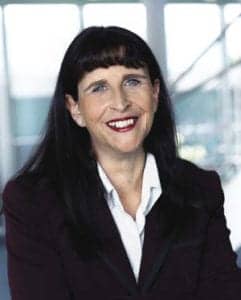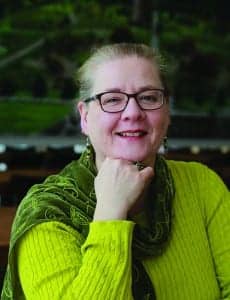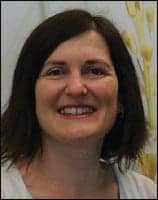Mythbusters | August 2018 Hearing Review
Editor’s Note: As reported in The Hearing Review online, Phonak has convened a select group of hearing healthcare experts to provide evidence-based recommendations to hearing care providers on how to better engage family members. The group proposes an audiologic treatment shift from a site-of-lesion focus to a family-centered care perspective as a means of increasing the value of our services and the uptake of hearing devices. This paper is the sixth in a series of several common (mis-)beliefs or myths challenged by the authors. Click here to access Mythbusters #1, Mythbusters #2, Mythbusters #3, Mythbusters #4, and Mythbusters #5.
There are two aspects to this myth, so let’s dive into both.
1) I am already family-centered. If you have already implemented a Family-Centered Care (FCC) approach to hearing care, that’s great. You are delivering gold standard care, backed up by strong evidence. Please pass on the good word and encourage others to do the same. Maybe you could be a mentor for a student or fellow clinician in putting FCC into practice?
You may also find it beneficial to be the FCC ambassador in your practice. Taking a family-centered approach means that all practice staff members adopt this approach, from the first telephone call with the client right through to ongoing follow-up. Conducting an FCC audit—based on the 10 Recommendations to Implement Family-Centered Care1 (Figure 1)—in your practice could highlight areas of potential improvement or further implementation of FCC.The practice staff who make the appointment should routinely ask who (and not if someone) will be attending the appointment with your patient. They should also feel comfortable in answering any questions or overcoming reluctance to family-member involvement in all appointments. In busy audiology practices, some staff members may require a little training on why taking an FCC approach is so important.
During your FCC audit, you could also assess the forms and self-report questionnaires being used in your practice. Look at your case history form. Is it family-centered? Look at the self-report questionnaires to see if the perspectives of patients and family members are both represented. Do you use a form to record goal-setting, and if so, does it record the family member’s communication goals? Setting goals with everyone involved means that subsequent decision-making is also easier, as there is buy-in and involvement from all. By recording these goals separately for both the client and their family members, you can address them during follow-up appointments too and assess their attainment. The input from the family member can help to ensure the chosen rehabilitation program has been successful.
On an organizational aspect, not only should your waiting and consultation rooms be family member-friendly, but FCC should also be a regular topic on your team meeting agenda. It is also beneficial to record in your client management or appointment system if a family member was present during each appointment.
If you or your practice haven’t yet fully adopted an FCC approach, you are not alone. A team of researchers recently filmed and analyzed 62 initial hearing assessment appointments that involved an adult client aged 55 years or older.2 Of these, 17 (27%) appointments had a family member present. This is in line with other research3 that concluded less than 30% of appointments had a family member present. So the first step is to ensure that everyone involved in setting up appointments makes sure that the expectation of family-member involvement was established from the start.
While having a family member present is a great first step, they should also be actively involved in the appointment. Analysis of the interactions in the 17 audiology appointments with family members present (mentioned above),2 showed that family members were not typically invited to join the conversation, and if they did self-initiate their involvement, the conversation was often redirected toward the client. An effective way of ensuring that everyone in the appointment has a turn to speak is to start the conversation indicating that you will be giving both your client and their family members time and opportunity to give input and ask questions. This establishes expectations and can reduce interruptions.
2) So what’s the hype? The concept of family-centered care originally evolved in pediatrics, and for this reason we sometimes assume that FCC is only for children with hearing impairment and their families. There is evidence to show, however, that the benefits of a FCC approach apply to adult patients too. A recent literature review of the benefits of FCC older adults in medical settings found that adults with chronic conditions reported greater quality of life and compliance with intervention/adherence to medication if their health care provider used a FCC approach.4 Research into family-centered care in audiology has shown that older adults with hearing impairment were more likely to adopt hearing aids5,6 and succeed with them6 if family members were involved in the rehabilitation process. This translates into benefits for practitioners and the practice as a whole as well.
The Challenge
If you are an FCC ambassador, set a date for an FCC audit of the practice you work in and schedule to report the results to the team. If FCC is still a work-in-progress for you, reflect on how you took a FCC focus at the end of the next work day and identify one FCC implementation goal for the following day.
References
- Singh G, Hickson L, English K, et al. Family-centered adult audiologic care: A Phonak position statement. Hearing Review, 2016;23(4):16.
- Ekberg K, Meyer C, Scarinci N, Grenness C, Hickson L. Family member involvement in audiology appointments with older people with hearing impairment. Int J Audiol. 2015;54(2):70-76.
- Grenness C, Hickson L, Laplante-Lévesque A, Meyer C, Davidson B. Communication patterns in audiologic rehabilitation history-taking: Audiologists, patients, and their companions. Ear Hear. 2015;36(2):191-204.
- Deek H, Hamilton S, Brown N, et al. Family-centred approaches to healthcare interventions in chronic diseases in adults: a quantitative systematic review. J Advanced Nursing. 2016;72(5):968-979.
- Singh G, Launer S. Social context and hearing aid adoption. Trends in Hearing. 2016;20.
- Meyer C, Scarinci N, Ryan B, Hickson, L. “This is a partnership between all of us”: Audiologists’ perceptions of family member involvement in hearing rehabilitation. Am J Audiol. 2015;24:536-548.


Also in this series…
Singh G, Hickson L, English K, Scherpiet S, Lemke U, Timmer B, Buerkli-Halevy O, Montano J, Preminger J, Scarinci N, Saunders G, Jennings MB, Launer S. Family-centered adult audiologic care: A Phonak position statement. Hearing Review. 2016;23(4):16.
Montano J, English K, Hickson L. Mythbusters’ Myth # 1 : I would like to do more counseling but time just won’t allow for it. Hearing Review. 2017;25(1):28.
Scarinci N, English K, Lemke U. Mythbusters’ Myth #2: I will be expected to be a marriage counselor. December 15, 2017. Available at: https://hearingreview.com/2017/12/mythbusters-myth-2-will-expected-marriage-counselor
Hickson L, & Singh G. Mythbusters’ Myth #3: Many patients do not want their family in the room. Hearing Review. 2018;25(3):26.
Jennings MB, Lind C, Scarinci N. Mythbusters’ Myth #4: I have to discuss the audiogram. Hearing Review. 2018;25(5):22.
Lind C, Montano J, Singh G. Mythbusters’ Myth #5: Including family members in the appointment takes up too much valuable time. May 30, 2018. Available at: https://hearingreview.com/2018/05/mythbusters-myth-5-including-family-members-appointment-takes-much-valuable-time






Hi,
Thanks for sharing this information. There are some conferences happening in which medical specialty would be “Patient and Familycenter Care” and here is one of those conferences the conference details are given below.
Source: https://www.emedevents.com/online-cme-courses/others/sleep-medicine-in-2020-and-moving-forward
Hi,
Thanks for sharing this information. There are some conferences happening in which medical specialty would be “Family Medicine” and here is one of those conferences the conference details are given below.
Respiratory Therapists: Oxygen Therapy: What you need to know to get it right for your patients. This webinar discusses evaluation and testing requirements for Long Term Oxygen Therapy (LTOT) treatment and guidelines.
Source: https://www.emedevents.com/online-cme-courses/webcasts/oxygen-therapy-what-you-need-to-know-to-get-it-right-for-your-patients